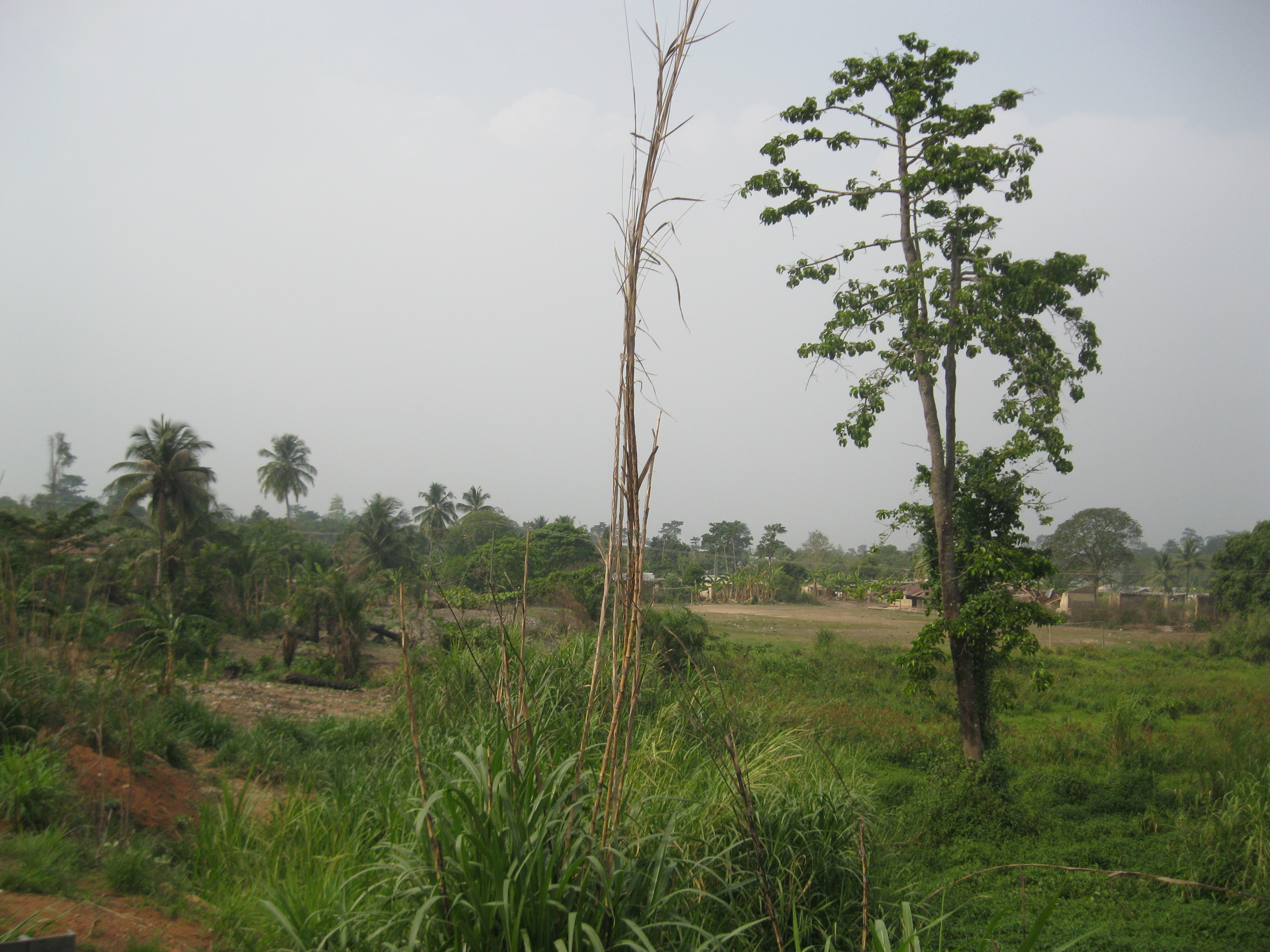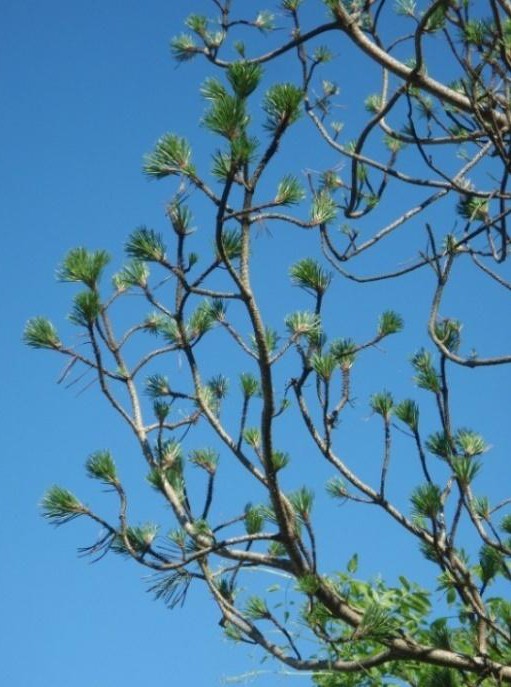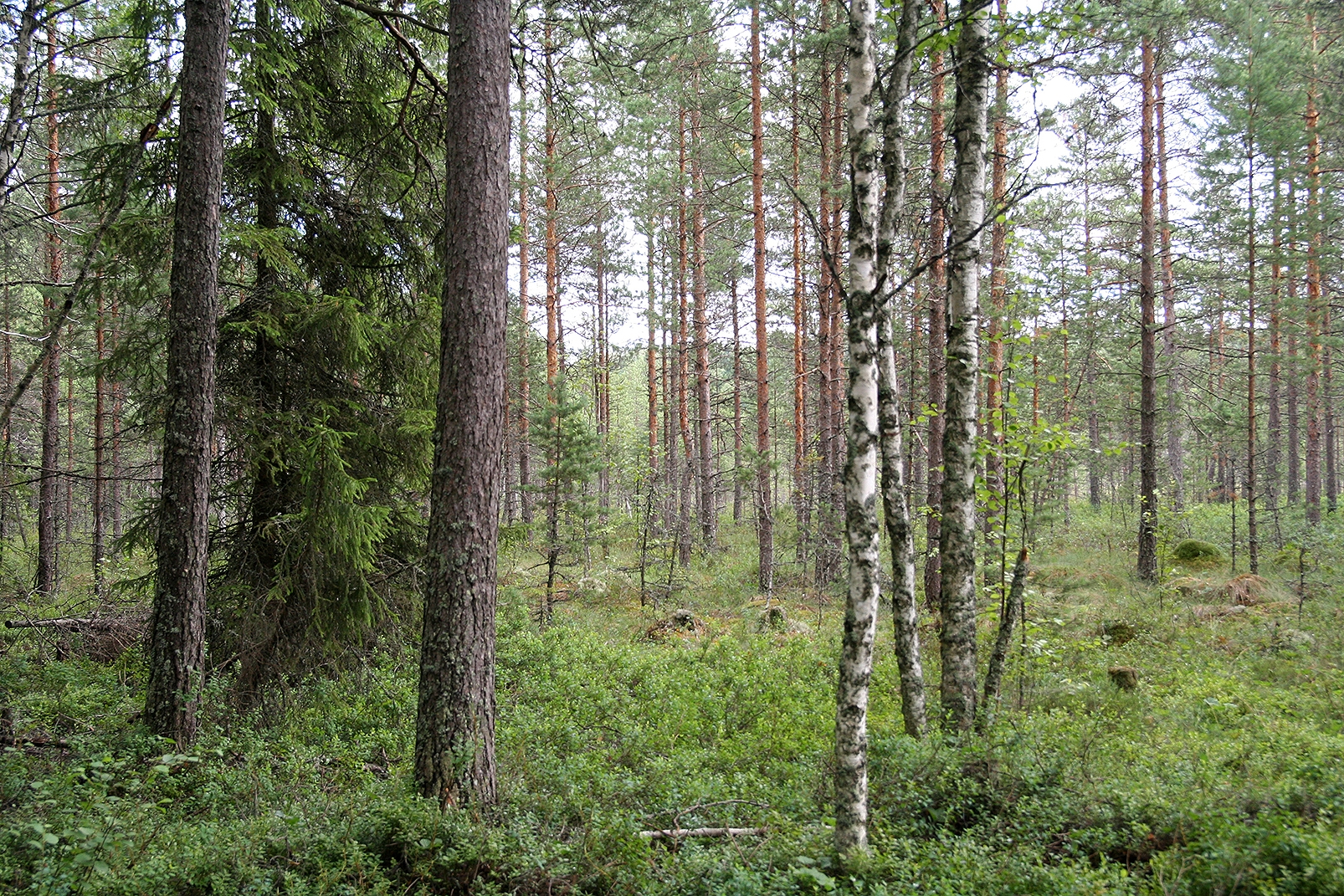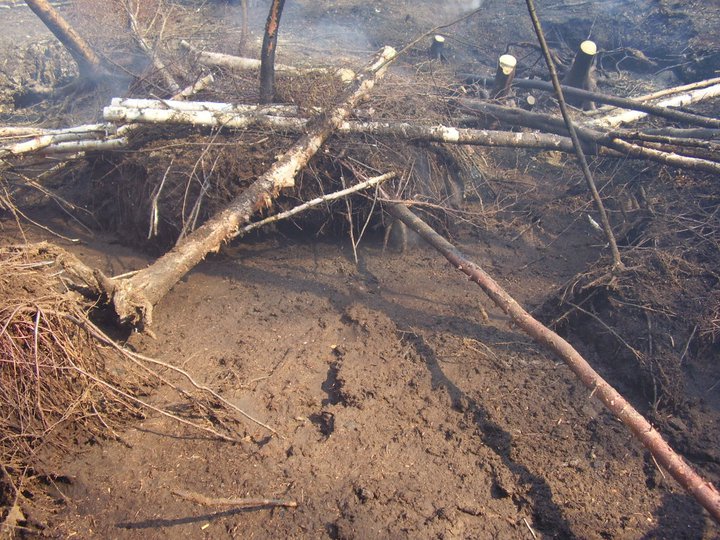IUFRO Spotlight #12 – Putting production from peatlands in perspective
Putting production from peatlands in perspective
By Palle Madsen (University of Copenhagen, Denmark)
Coordinator of IUFRO Research Group 1.01.00 – Temperate and boreal silviculture
Policy makers and forest managers in the boreal and temperate regions now have a new tool to assist them in making climate-smart and environmentally responsible peatland forestry decisions for the future.
Persons involved in peatland management can benefit from Peatland Ecology and Forestry – a Sound Approach, a new very well-illustrated book that gathers an impressive array of research from various countries and regions. Read more…
IUFRO Spotlight #11 – Power, discrimination and gender equality
Power, discrimination and gender equality
By Tuija Sievänen (Finnish Forest Research Institute),
Coordinator of IUFRO Division 6 – Social Aspects of Forests and Forestry
A new publication takes a long, hard look at – and dispels some of the myths about – the issue of gender equality as it relates to development and environmental governance of the forests.
The author, Seema Arora-Jonsson of the Swedish University of Agricultural Sciences and Coordinator of the IUFRO Working Party dealing with gender research in forestry, focuses on groups in India, which is widely recognized as a highly gender-biased country and in Sweden, a country seen as highly gender-equal. Read more…
IUFRO Spotlight #10 – For Peat’s Sake
For Peat’s Sake
By Björn Hånell, Coordinator, IUFRO Division 1 (SLU, Sweden), and
Jean-Michel Carnus, Coordinator, IUFRO Division 8 (INRA, France)
Forest fires are a persistent and growing problem around the world. While fire certainly produces some ecological benefits, those are arguably being outweighed by the increasing frequency, size and intensity of fires as the planet warms.
In a given year, forest and grassland fires can be extensive – burning 350- 450 million ha (an area larger than India); expensive – costing many billions of dollars to combat (in Canada alone fire management costs can reach $800 million a year); and lethal – a recent study attributed almost 340,000 deaths annually to respiratory and other causes related to the impact of forest/bush fires.
Making the situation more worrisome are predictions that these fire events could triple in the next 50-75 years.
A recent Canadian Forest Service bulletin: Peatland Fires and Carbon Emissions (Frontline Express 50 http://cfs.nrcan.gc.ca/publications?id=33351) noted that some fire researchers from Canada, the U.S. and Russia – where fire in those countries’ boreal forests is a significant activity – have begun looking more closely into boreal peatlands.
Peatland ecosystems cover only 2-3% of the earth’s land surface, but in the boreal they make up 20-30% of the forest region and average 20-30% of the area burned annually.
Those peatlands store an estimated 30% of the world’s terrestrial carbon – some 300 billion metric tons. Typically they are fairly wet areas, but when they dry and burn – usually in severe drought years or from some drainage activities – they have the potential to flip from carbon sink to carbon source as they release huge amounts of greenhouse gases.
How significant are the emissions from peatland fires? In 1997 in Indonesia peatland fires released the equivalent of 20-40% of all annual global fossil fuel emissions. And Indonesia’s peatlands are dwarfed by the peatland reserves in Canada, Alaska and Russia.
Peatland fires tend to produce a lot of smoke and can be difficult to extinguish. In the north they can continue to smoulder stubbornly beneath the winter snow and then burst into flame again in a subsequent year.
Smoke, as noted above, also makes human health a major consideration in peatland fires. Smoke is toxic to begin with, but peatlands contain about 15 times as much mercury – a serious toxin – as nearby upland forests. The mercury-laden smoke can travel far. Recently in Russia, smog permeated Moscow from peat fires many kilometers distant and, within the last few months, air quality advisories were being issued in parts of British Columbia on Canada’s west coast as smoke from Siberian peat fires pushed ozone levels to neverbefore- seen numbers.
While quite a bit is known about the function and behavior of fire in the boreal forest, much of the research there has been on upland forest areas. By comparison, much less is known about the vulnerability of boreal peatlands to fire.
One of the key areas being investigated in the boreal peatlands is focused on developing a peat moisture code. By getting a better handle on peatlands moisture content, researchers will know the potential for burning, when it might occur and how deep it will burn. That will help preparation and mitigation efforts.
A report by J.M Waddington (McMaster Centre for Climate Change, McMaster University) and colleagues suggests that such a code can be developed – with modifications to adapt to specific peat types and issues – within the framework of the existing Canadian Forest Fire Weather Index (FWI) System.
The FWI System (or portions of it) has been adopted – with adaptations for local conditions – by several countries as a fire management tool: New Zealand, Fiji, Portugal, Spain and several U.S. states, among them.
There are six components to the FWI System. Three are fire behavior indices – related to rate of fire spread; available fuel; and frontal fire intensity.
The other three components, those most germane to this topic, relate to fuel moisture. They are numeric ratings of the moisture content of litter and other fine fuels; the average moisture content of loosely compacted organic layers; and the average moisture of deep, compact organic layers.
The ratings give indications of factors ranging from ease of ignition and flammability of fine fuel, to the amount of smoldering in deep duff layers and large logs.
IUFRO Spotlight #9 – Self Interest Can Conserve Forests
Self Interest Can Conserve Forests
By Daniela Kleinschmit (Swedish University of Agricultural Sciences, Department of Forest Products), Coordinator of IUFRO Division 9 Forest Policy and Economics
Legality verification – “Certification Lite”, so to speak – may offer the impetus for a workable system of responsible, sustainable global forest governance that previous efforts have been unable to accomplish. That’s one of several hypotheses put forward in a paper by Benjamin Cashore and Michael Stone of Yale University’s School of Forestry and Environmental Studies. Read more…
IUFRO Spotlight #8 – Combatting Climate Change Comprehensively
Combatting Climate Change Comprehensively
By Ben Chikamai (Kenya Forestry Research Institute)
IUFRO Board Member, Kenya

Degraded forest landscape in the Offinso District, Ghana. The original high forest cover has been modified through over-exploitation of wood resources, agriculture activities, and establishment of human settlements. (Photo by Ernest Foli, FORNESSA)
African forest policy makers and governments could benefit by using a recent study as a template to help bring climate change adaptation into the mainstream of national development strategies.
The study, conducted in two forest-dependent areas in Africa, emphasizes cross-sectoral planning – recognizing and incorporating interacting priorities, such as agriculture, health, forestry, land-use planning, water resources, energy, education, etc. – as a key element in implementing any effective climate change adaptation strategy.
Forests can play an important role in achieving climate change adaptation goals in Africa. But sustainable forest management decisions alone can’t accomplish that. Policy decisions – for forests as well as other resource areas – must complement one another. At present, impacts from some of those other sectors may actually be threatening the forests.
There are a number of pressures on Africa’s forests – agricultural expansion and forest over-use among them. Reducing non-climatic pressures, in a logical, prioritized manner, can help reduce the vulnerability of forest ecosystems. That’s crucial because many people in Africa are highly dependent on forest goods and services. Those people are, and will continue to be, particularly vulnerable to the impacts of climate change. Improving the capability of forest dependent communities to adapt to a changing climate will reduce that vulnerability.
The study: Enhancing Adaptation of Forests and People in Africa – Development of Pilot Cases for Selected Forest Ecosystems in Ghana and Malawi, examined forest issues related to climate change in selected areas of those countries. The authors, E.G. Foli and S. Makungwa, worked in those specific areas because they represent typical examples of the ecological and socio-economic situation prevalent in Sub-Saharan Africa, so the findings could also be applied to countries in West, Central, Southern, and parts of East, Africa.
Among other findings, the study confirmed a general trend of increasing mean annual temperatures and a decline in mean annual rainfall. In the Ghana pilot area this has resulted in forest loss due to wildfire; a decline in the availability of non-timber forest products; reductions in agricultural crop yields; and declining potable water supplies and the associated risk of water-borne diseases. In the Lake Chilwa area of Malawi, in addition to declining potable water supply and its associated disease risks, there has also been poor productivity on tree farms; loss of indigenous trees in communal areas, riverbanks and surrounding forest reserves; a decline in agricultural productivity; and declining fish catch from the lake.
While the study noted how changing climatic conditions can adversely affect livelihoods, health and food security in those communities, it also noted examples of locally initiated adaptation strategies developed to mitigate the impacts of the changing climate. By compiling existing information, including the needs of stakeholders in the various inter-related resource areas, consulting with local communities and assessing and evaluating each project site, enhanced and concrete adaptation measures for the pilot areas were developed.
Then, a priority setting exercise was carried out to identify appropriate and relevant adaptation strategies and activities that would best serve the communities. Similar techniques could be used across a much wider area, the authors say, but that will require political will, financial commitment, and an integrated multi-sectoral – even trans-national – approach. It’s a challenge, they agree, but one that must be faced.
The full study can be found at: http://www.fornis.net/content/enhancing-adaptation-forests-and-people-africa-development-pilot-cases-selected-forest-ecosy
IUFRO Spotlight #7 – Setting an ‘Earthy’ Standard
Setting an ‘Earthy’ Standard
By Jean-Michel Carnus, Coordinator, IUFRO Division 8
(INRA, France)

Since 2003, 26 European specialists in humus forms have been working to develop a standardized system of classifying the condition and configuration of topsoil layers adapted to European ecological conditions.
The result of their work could become an international reference, of which, none exists today.
Studies have shown that soils store more carbon than terrestrial vegetation and the atmosphere combined, and also that soil organic matter plays a key role in the global carbon cycle as it stores huge amounts of carbon and thus counters global warming.
It is also known that some soil organic matter remains stable for thousands of years while other soil organic matter degrades quickly and releases carbon into the atmosphere thereby reinforcing the greenhouse effect.
So, as the earth’s climate warms and concerns increase about the amount of carbon in the atmosphere, a standardized system will allow a better understanding of the role of the humus forms in the carbon cycle – and the conditions under which they represent a sink (absorbing carbon), or a source (releasing carbon into the atmosphere).
Humus forms – the brown or black layers consisting of partially or wholly decayed matter – provide nutrients for plants and increase the ability of soil to retain water. These layers contain a large part of the total soil organic carbon and provide an interface between the atmosphere and the mineral soil, representing an important linkage to aquatic systems.
The main challenge the specialists have sought to address is the lack of harmony that exists in classification keys for humus forms – they are different in every European country.
Those classification differences mean that data cannot be easily exchanged among research teams, land managers and policy makers working with soils in different countries.
The specialists’ aim is to improve the compatibility of those established national classification systems and to develop a unified European reference base for humus forms. The classification system is geared primarily to West European countries between 40-60 degrees of latitude, but it’s expected to work in other ecosystems of equivalent climate. It has already been successfully tested in some forests in Iran.
While aimed primarily at forest soils, the classification system is also applicable to grasslands, pastures and wetlands.
One of the keys to this standardization is to recognize differences in local ecosystems and the need to analyze the soil horizons – layers parallel to the soil surface, whose physical characteristics differ from the layers above and beneath – of each different humus form.
The European specialists have set up protocols for the assessment and sampling of certain horizons and have developed definitions for specific diagnostic horizons, materials and their designation.
Acceptance of this classification system will provide a valuable tool to help us better understand the connection between different humus forms and carbon storage in the soil and the response of soil organic matter to a warming climate.
To view the full report, go to: [http://www.sciencedirect.com/science/article/pii/S001670611100139X] (summarized as published article)
and [http://hal.archives-ouvertes.fr/docs/00/56/17/95/PDF/Humus_Forms_ERB_31_01_2011.pdf] (unpublished complete document)
———————————————————–
Media Contact
Jean-Michel Carnus: +33-5-57122865 or jean-michel.carnus(at)pierroton.inra.fr
Gerda Wolfrum: +43 1 877 0151 17 or wolfrum(at)iufro.org
———————————————————–
Related Links
Publications:
- A European morpho-functional classification of humus forms, http://www.sciencedirect.com/science/article/pii/S001670611100139X
- European Humus Forms Reference Base, http://hal.archives-ouvertes.fr/docs/00/56/17/95/PDF/Humus_Forms_ERB_31_01_2011.pdf
IUFRO Division 8 – Forest Environment: http://www.iufro.org/science/divisions/division-8/80000/
———————————————————–
Photo Credits
New Humus forms, in a structured dynamic system of classification. Photo provided by Augusto Zanella, Deputy Coordinator of IUFRO 8.02.03.
IUFRO Spotlight #6 – Putting Experts to the Test
Putting Experts to the Test
By: Jurij Beguš, Coordinator, IUFRO 9.01.03 Extension and Knowledge Exchange
(Slovenia Forest Service, Department for Forestry Technique)

Expert knowledge – advice and-or recommendations from those who have spent much time researching and learning about a given subject area – is often used by resource managers who do not themselves have the time or resources to collect all the data necessary to make a sound decision.
That expert knowledge, which can be used in highly diverse situations in various ecosystems and geographical areas, can assist with forest management, eco- regionalization, species conservation or environmental impact assessment. Read more…
IUFRO Spotlight #5 – Forests: Medicine for Body and Soul
Forests: Medicine for Body and Soul
By Hannu Raitio, Coordinator of IUFRO Task Force ForHealth
(DG Finnish Forest Research Institute, Metla)
Imagine a doctor who, rather than advising the usual: “Take these pills daily for the next two weeks,” says instead: “Take long walks in the forest daily for the next two weeks. That should get you back to normal.”
 Okay, that’s a bit fanciful. But, it may not be too big a stretch.
Okay, that’s a bit fanciful. But, it may not be too big a stretch.There is a growing body of scientific research that suggests forests and other natural, green settings can reduce stress, improve moods, curtail aggressiveness and – possibly – even strengthen our immune systems.
Medical and health care costs are a skyrocketing financial burden in many, if not all, countries around the world – often funded through taxation or other common responsibility arrangements. Read more…
IUFRO Spotlight #4: Forests: The Carbon Conundrum
By Robert Jandl, Deputy Coordinator of IUFRO Division 8
(BFW, Austria)
In the coming decades, forests will play a major role in our planet’s carbon cycle and in our efforts to manage the amount of carbon in the atmosphere.
Getting a better understanding of whether that role might be good (a sink, absorbing carbon) or bad (a source, adding carbon to the atmosphere), motivated a study by Yude Pan and colleagues, recently published in Science Express.
The study identifies global forests as the major terrestrial carbon sink (as opposed to grasslands, peatlands or agricultural lands). It is the first such study to base conclusions on forest inventory and land cover data instead of simulation results. Read more…
IUFRO Spotlight #3: The Montesclaros Declaration
End trade in detrimental ornamentals to save forests
By Eckehard Brockerhoff, IUFRO Deputy Coordinator of Division 7
(SCION, New Zealand)
 In a provocative attempt to save the world’s forests, a group of 70-plus scientists from 17 countries are asking trade policy makers around the globe to phase out such international trade in high-risk plants that put forest health at high risk while offering limited economic benefit.
In a provocative attempt to save the world’s forests, a group of 70-plus scientists from 17 countries are asking trade policy makers around the globe to phase out such international trade in high-risk plants that put forest health at high risk while offering limited economic benefit.
If the scientists’ proposal is implemented, it would mean an end to all international trade in containerized ornamental plant seedlings and trees intended as plants for instant landscape planting. Read more…



